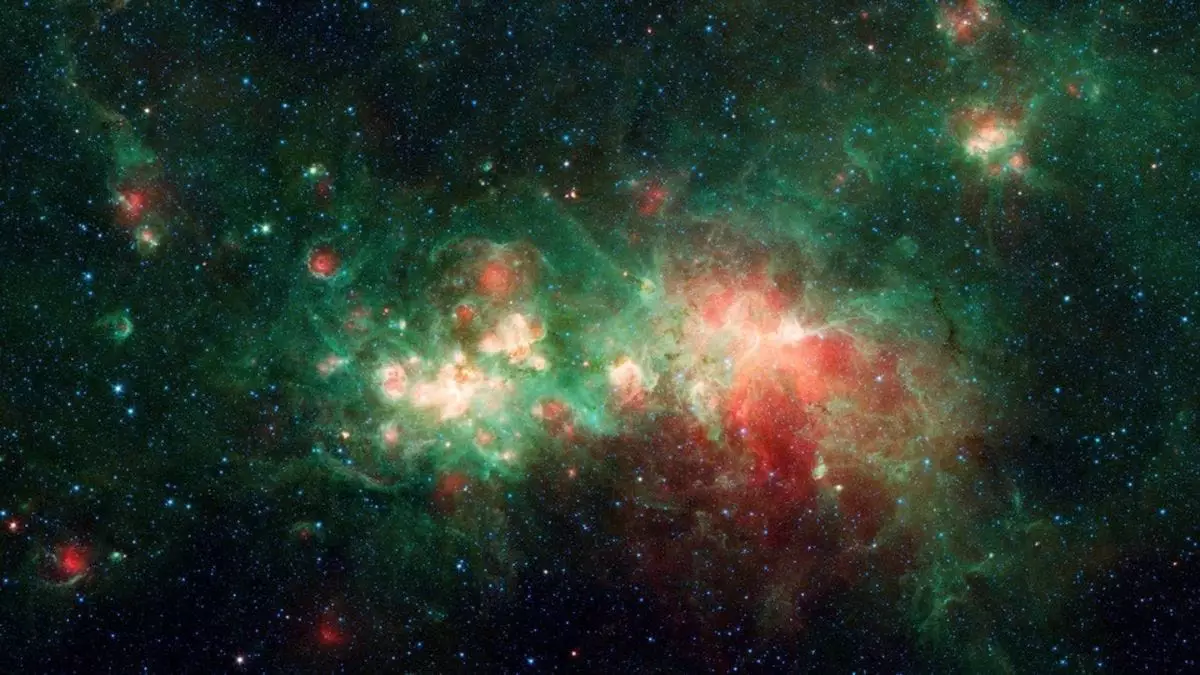Recent investigations into the structure of the universe have unveiled intriguing complexities that challenge previous understandings of cosmic evolution. Under the guidance of researchers Joshua Kim and Mathew Madhavacheril from the University of Pennsylvania, a comprehensive analysis was conducted using data from two significant cosmic surveys: the Atacama Cosmology Telescope (ACT) and the Dark Energy Spectroscopic Instrument (DESI). This ground-breaking research highlights noteworthy findings that suggest the universe’s development over the last four billion years might be far more intricate than standard models suggest.
The study, published in the Journal of Cosmology and Astroparticle Physics, integrates ACT’s cosmic microwave background (CMB) lensing data with the three-dimensional mapping of luminous red galaxies (LRGs) by DESI. The ACT’s observations date back to approximately 380,000 years post-Big Bang, providing essential insights into the primordial conditions that shaped the universe. In contrast, DESI offers a modern perspective, charting the distribution of millions of galaxies in an attempt to decipher the mechanisms behind cosmic structure formation.
By juxtaposing these two datasets, the researchers have devised a profound means of envisioning the universe’s evolutionary pathway. This methodological merging lays the groundwork for understanding how cosmic structures, such as galaxies and galaxy clusters, have developed over billions of years.
A key revelation from this research is a potential deviation in the distribution of cosmic structures, particularly pertaining to a metric known as Sigma 8 (σ8), which measures density fluctuations in the universe. The findings indicate a σ8 value that is lower than anticipated, signaling that the clumpiness of cosmic matter does not align fully with predictions derived from standard cosmological models, based primarily on early-universe conditions.
Mathew Madhavacheril acknowledged that although the majority of results remain consistent with Einstein’s theory of gravity, the observed discrepancies cannot be overlooked. These subtle yet profound variances beg the question: is there new physics at play, or merely an anomaly needing further exploration?
One intriguing hypothesis put forth by researchers is the role of dark energy in shaping cosmic structure. This mysterious force, responsible for the accelerated expansion of the universe, might be causing unexpected effects on the formation of galaxies and their clustering. As scientists continue to gather data and refine the models, the hope is to clarify whether these inconsistencies represent isolated anomalies or point to fundamental truths yet to be understood within the cosmos.
Future observational efforts are on the horizon with upcoming advanced telescopes such as the Simons Observatory. These tools promise to enhance our understanding of the universe’s complexities. The ongoing pursuit of data will play a crucial role in determining the nature of the discrepancies observed. As researchers delve deeper into these cosmic puzzles, the potential for groundbreaking discoveries looms large, holding the promise of revolutionizing our understanding of the universe’s evolution in the years to come.

Leave a Reply